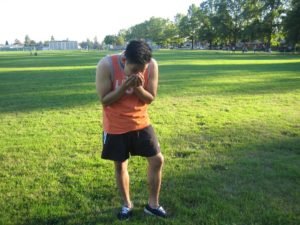Once the spring season arrives, it can be a difficult time for individuals who have pollen allergies. Ragweed, grasses and pigweed are the usual causes of hay fever or allergic rhinitis but even large wind-pollinating trees can contribute to the pollen in the air as well. An individual can also suffer from symptoms as early as January if he/she is allergic to pollen from cypress, juniper, sequoia and other trees included in the same family that produces pollen early in the year. It is important to note that juniper trees and shrubs are capable of instigating allergic skin rashes if exposed to the sap.
Close look on allergy to juniper
Take note that juniper and closely related trees in the cedar family are known to trigger pollen allergies particularly in areas where the trees are abundant. An allergic reaction is due to an overly active response of the immune system upon exposure to dust, pollen or mold that results to runny nose, sneezing and red, itchy eyes.
An asthma attack brought on by exposure to the pollen of juniper can trigger wheezing and shortness of breath. As for the sap from the juniper stems, it contains calcium oxalate which are microscopic crystals that can immediately trigger burning sensation and irritation once in contact with the skin.

Difference with female junipers
Choosing shade trees as well as landscaping shrubs that are insect-pollinated can help minimize the amount of pollen in the neighboring environment. When growing junipers, a tactic to help reduce pollen exposure is to grow only the female junipers or select plants are produce berry-like cones.
Remember that only the male plants generate the almost invisible pollen cones. Once junipers start to produce cones, it is easy to identify the female plants. Take note that only the female plants should be used in order to minimize the amount of pollen in the environment, thus reducing exposure.
Preventive measures
- The individual should wear long-sleeved shirts, gloves and long pants while working outdoors especially when pruning or working close to the plant.
- Reduce exposure to juniper pollen by staying indoors during windy, dry days. Outdoor chores should be delegated to other family members or at least utilize a dust mask if required to go outside.
- Clothes that were worn outdoors should be removed and shower right away to remove pollen from the skin and hair.
- Avoid drying laundry outdoors or at least temporarily.
- If the level of pollen is high, keep the windows and doors closed and utilize an air conditioner.
- Utilize high-efficiency filters or an HEPA filter for the bedroom.
- The individual should avoid activity or exercise outdoors during the morning if the pollen count is high.
Treatment
Irrigation of the nasal passages or rinsing out using salt water is a way to help ease the symptoms which involves direct flushing of the mucus and pollen from the nose.
If the individual decides to use medications, they should be taken early when the pollen count is expected to increase. There are several effective over-the-counter treatments that include newer versions of oral antihistamines that will not cause drowsiness. The older antihistamines are also effective but often cause drowsiness.
Decongestants particularly pseudoephedrine can help relieve nasal stuffiness. There are also products that combine antihistamines with decongestants. The doctor can prescribe the suitable medications and even recommend desensitization therapy.
As for allergic skin reactions to the sap of juniper, steroidal creams and medications can be used. Just remember though that there are various home remedies and antihistamine lotions that can be used first before steroids.
